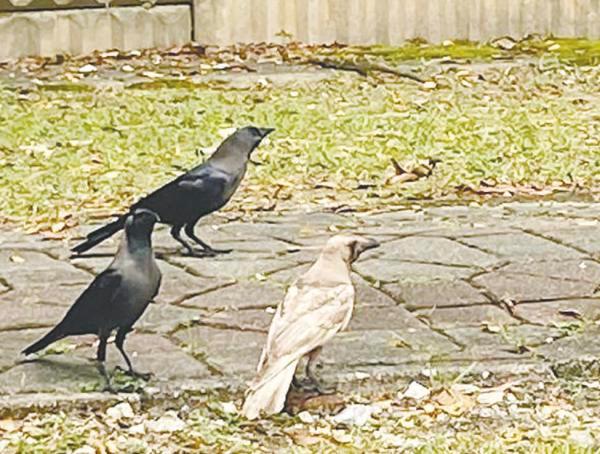IN this intricate web of the natural world, diversity thrives, showcasing the beauty and wonder of life in its myriad forms. Among these, the caramel crow emerges as a captivating presence, its rarity and unique colour drawing the eye and stirring the heart. While its name evokes images of sweetness, its significance transcends mere flavours, embodying the spirit of adaptability and resilience crucial in our ever-changing landscape.
Not all crows are black. More rare are the caramel crows. The light colouring of this crow is the result of a condition called leucism, which affects the retention of pigments in the bird’s feathers. Found in the verdant expanses of certain regions, the caramel crow boasts a remarkable appearance, its feathers adorned with hues reminiscent of caramel.
This avian species, akin to its more common relatives, the crows and ravens, thrives in a range of habitats, from dense woodlands to bustling urban environments. The caramel crow’s ability to thrive amid shifting landscapes is a testament to its resilience.
Beyond their striking appearance, caramel crows play a vital role in maintaining the balance of their ecosystems. Their diverse diet, ranging from insects to fruits, contributes to the regulation of species populations and the dispersal of seeds essential for forest renewal.
Additionally, their scavenging habits aid in keeping their habitats clean, reducing the risk of disease transmission.
What sets the caramel crow apart is not just its appearance but also its unique contributions to the ecosystem. These birds display remarkable intelligence, employing problem-solving skills to navigate the environment. Their communal roosting behaviour fosters social bonds and facilitates the exchange of vital information for survival. Moreover, their vocalisations serve as a means of communication within their groups, alerting others to potential threats.
In recent years, scientists have begun to recognise the caramel crow as an indicator species, offering valuable insights into ecosystem health.
Monitoring caramel crow populations provides crucial data on the impacts of habitat degradation, pollution and climate change on biodiversity and ecosystem function.
Despite their resilience, caramel crows face numerous threats to their survival, including habitat loss, pollution,and collisions with human-made structures.
To ensure their continued existence, concerted conservation efforts are essential. Strategies should focus on habitat preservation, reducing pollution and raising public awareness about the importance of protecting these remarkable birds.
In a recent development, on April 8, an individual caramel crow was sighted in the urban landscape of Shah Alam, mingling with its more common counterparts in Shah Alam. This unexpected presence serves as a poignant reminder of the caramel crow’s adaptability.
Every species, no matter its size, holds a crucial place. Consider the humble crow family, for instance. Throughout the nesting season, they consume an astounding 40,000 grubs, caterpillars and other insects – many of which are considered pests by gardeners and farmers. Their voracious appetites not only help control pest populations but also aid in maintaining the delicate balance of ecosystems.
As caretakers of our planet, it falls upon us to cherish and safeguard the remarkable diversity of life that surrounds us. Let us unite in our efforts to protect the caramel crow and all the magnificent creatures that grace our world with their presence.
Comments: letters@thesundaily.com










